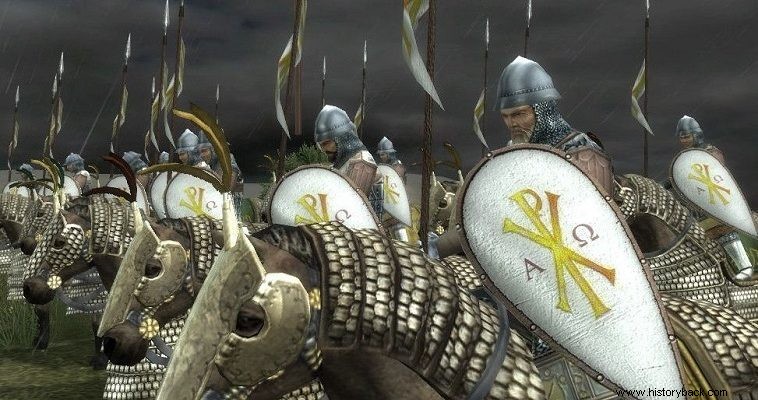
In the period 938 – 967 AD the worst enemy of the Byzantine Empire was the emir of Aleppo, the famous Saif al-Dawla. The emir had become a source of fear and terror in the region of today's Syria, daring attacks deep into Byzantine territory.
al-Natullah was a fanatical Muslimdetermined to bring the "holy war" (jihad) to the lands of the "infidels". In fact, from the moment he became Emir of Aleppo, he carried out, on an annual basis, multi-month raids on the Byzantine territories, killing, looting and seizing thousands of innocents as slaves.
In 953 AD he even achieved a great victory against the Byzantine army under Vardas Phokas in Germanikeia near the present border of Turkey - Syria. Two other attempts by Varda Phokas also had disastrous results for the Byzantines. In 955 AD but the situation changed.
Vardas Fokas retired and an outstanding Byzantine trio, Nikeforos Fokas, began to operate in the area and his brother Leon Phokas and their nephew Ioannis Tsimiskis . The new Byzantine leadership abandoned the defensive, passive stance and began to respond to Arab raids with equally devastating raids on enemy lands.
Successive hits until the end
At the end of 955 AD al-Dawlah had planned to launch a new raid against the Empire the following spring. The target of the Arab emir was Amida (today's Diyarbakir) and the Byzantine positions in "Al Jazira" (the area west of Mesopotamia).
Indeed, the emir invaded the Byzantine territory and after destroying as much as he could, he returned happily to his country. However, he counted without Tsimiskis, who pursued him with small forces. The division of Tsimiskis, however, was not the main body of the Byzantine army but the bait...
While Tsimiskis was openly persecuting the Arabs, Leon Fokas invaded the territories of the emirate of Aleppo and defeated the army that al-Dawlah had left behind. In the meantime al-Dawlah attacked Tsimiskis near the fort of Raban in torrential rain.
al-Dawlah was defeated and continued his retreat without knowing what had happened to his country... Thus, in effect, the Arab general suffered a strategic defeat despite his tactical success. After all, the Byzantines were not complacent as the road to Arab territory was now open.
In 957 Nikephoros Phokas also captured the fortress of Hadat , a veritable eagle's nest at a height of 1,000 m in the Taurus Mountains, which he razed, while Tsimiskis invaded, the following spring, Al-Jazeera and achieved a magnificent victory against Daulah's army near Amida. In this battle 75% of the Arab force was lost. After this victory, Tsimiskis turned again towards the fortress of Raban.
Continuous blows
al-Daulah himself moved to confront the Byzantine general. The battle was fought either in October or November 958 AD. and the Arab army, though it fought bravely, was dispersed. Those Arab officials who were captured were marched to the City in irons.
The blows of the Byzantines were now unanswerable. In 959 AD Leo Phokas attacked again and captured the fortified city of Kyros, leveling every Arab fortress he encountered. In 960 AD al-Daulah, taking advantage of the absence of Nikiforos Phokas in Crete, tried to answer. At the head of a large army, he invaded Byzantine territory and destroyed the fortress of Harisianos. On his way back, however, he was ambushed by Leo Phokas and his army was literally annihilated.
In 961, Nikephoros returned from Crete and in the middle of the winter campaigned against al-Daulah, taking him by surprise. Nikiforos Phokas destroyed every Arab he found in front of him. The Byzantines took revenge for decades of massacres and took no prisoners or slaves... Again al-Daulah tried to react but Nikephoros Phokas with 70,000 men appeared in front of Aleppo.
The Byzantine army captured and savagely looted the city. Only the citadel was not captured. Al-Daulah who had attempted a distraction attack, when he returned he saw his capital burned and destroyed, while over 10,000 of its inhabitants were slaves of the Byzantines.
al-Dawlah never recovered from this defeat. He attempted another attack in 963 but again his army was crushed by Tsimiskis, this time. Later revolutions also broke out in his state. He effectively abdicated and eventually died in 967, aged just 50, sick and disillusioned.
